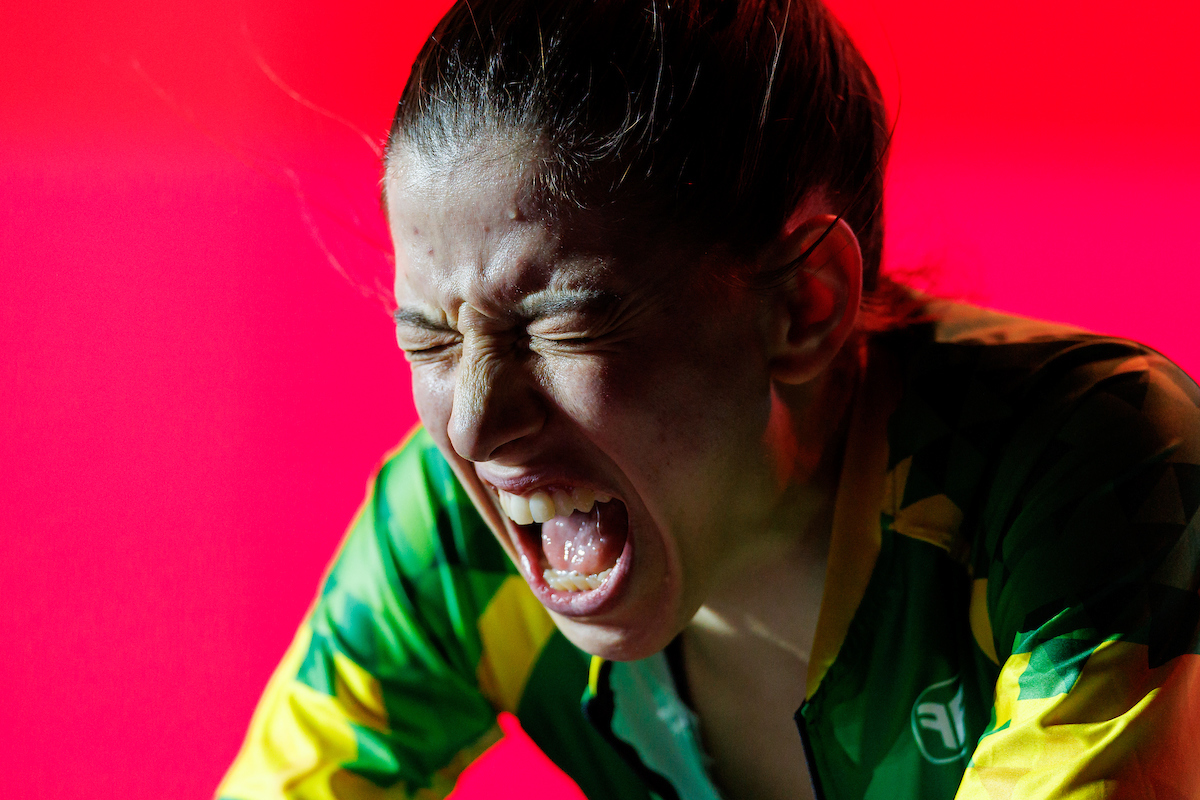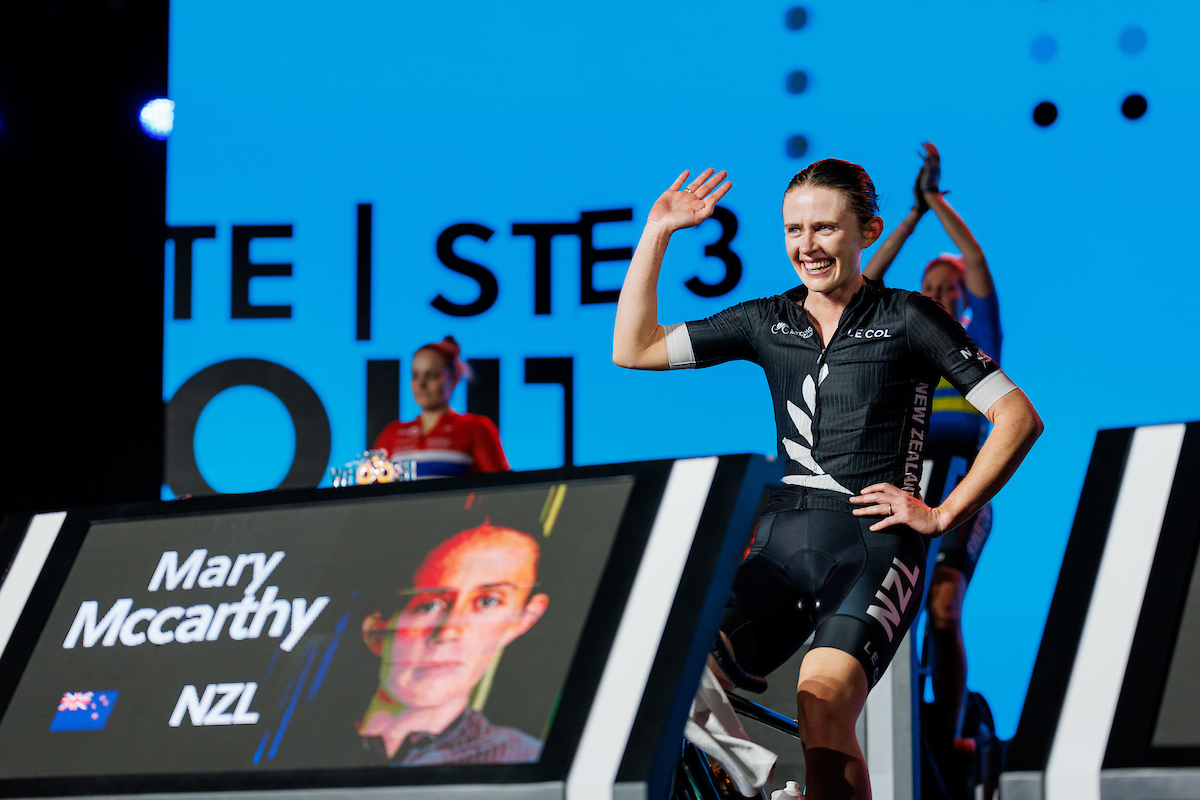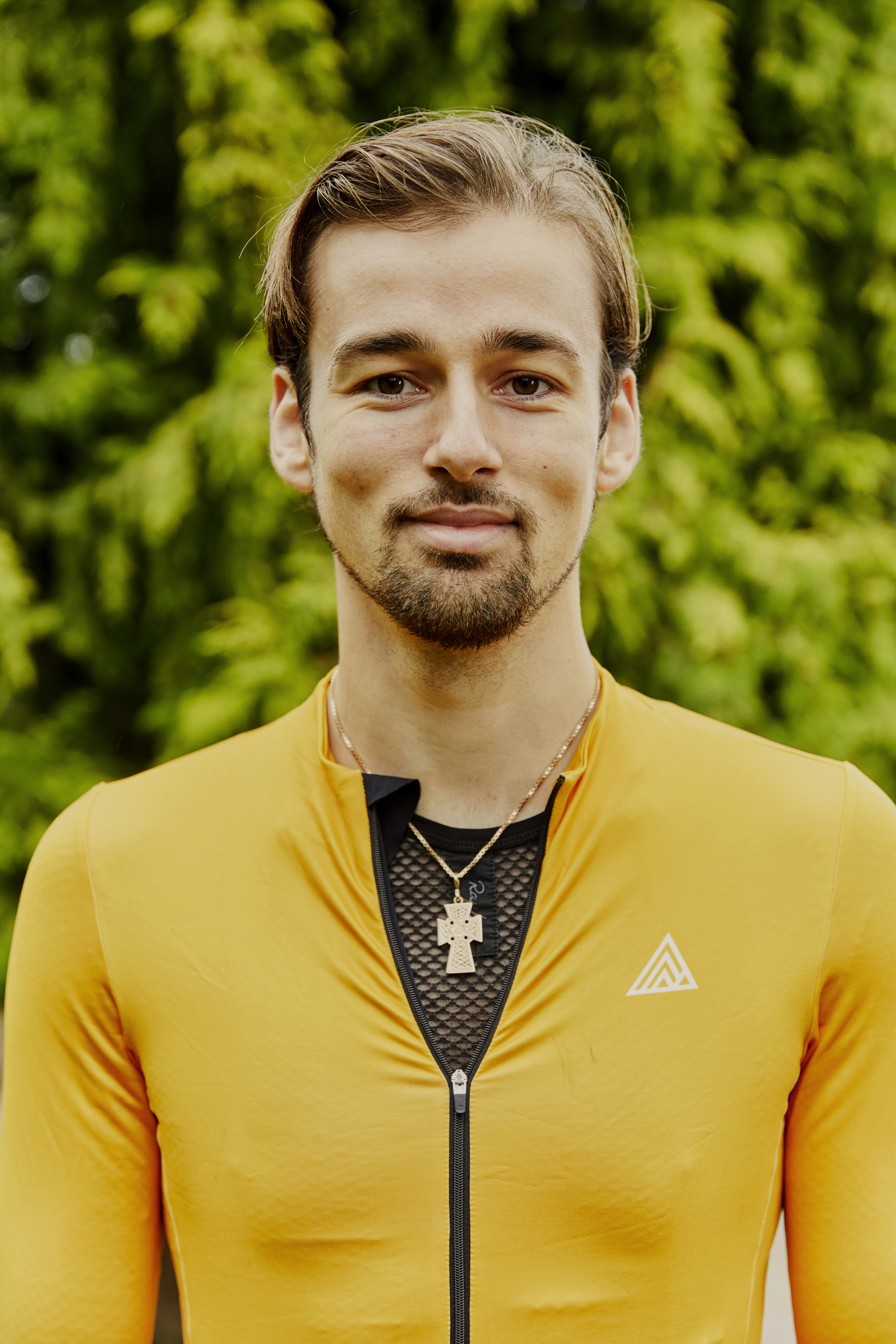What power does it take to be a competitive eSports racer?
We analysed the recent eSports World Championships to find out

The UCI Cycling Esports World Championships have just finished taking place, crowning two new, or rather repeat, World Champions in both the women’s and men’s categories. The popularity of cycling eSports has grown since the pandemic, and for this year’s event, the organisers claimed the largest viewer figures in the event’s history.
One of the things that separates these events from road racing is that the data and metrics of the riders are displayed live and for all to see. Even the likes of Velon showing us the speed and distance between rivals during key mountain attacks on the road, isn’t able to show the actual power output riders are doing. Instead, we are left to guess, or read hypotheses of varying degrees of accuracy online, as to how many watts the pros are pushing. It’s an interesting metric, as with many of us using power meters or smart trainers now, it gives us a real comparative effort that we can pitch ourselves against.
Looking at the events at this year’s Esports World Championships, completed on MyWhoosh, the races were based on points accumulated over the course of three events.

Race 1 – The Mountain’s Verdict
All riders started at the same time, with a 'pace line' starting two minutes after the riders. One point was awarded for every 5 seconds riders stayed ahead of this line, until the line caught them. This was definitely a case of pacing themselves, but keeping a high sustained intensity across the 8.4km course with 751m elevation gain.
For the men, eventual champion Jason Osborne stayed the longest, for 18 minutes and 28 seconds, gaining 221 points. This was achieved with an average power of 454 watts, or 6.58 watts per kilo, at his 69kg race weight.
Meanwhile, the highest raw power watt numbers came from Hayden Pucker with 507w for 14:45 and a 5min peak of 552w, but at 89kg he felt the wrath of the gradient more, with a lower average W/Kg.
In the women’s race, it was again eventual champion Mary Kate McCarthy who took the win, surviving ahead of the line for 19:36. She averaged 304w at 53kg for 5.736w/kg. Top Watts (my own personal award for riders) was taken by Mika Soderstrom with 328w at 66kg for 4.97w/kg for 14:51.
This was probably the least tactical of the stages, requiring a large sustained power output without any real tactics. They are big power numbers, but what’s quite interesting is that compared to the power of World Tour cycling stars on the road, they’re not as exceptional.
It’s been estimated in research studies, as well as from some backwards analysis of Zone 2 power figures, that Tadej Pogacar can sustain more than 7w/kg for more than 20 minutes, while already fatigued from the initial parts of stages and deep into stage races. That’s significantly more power, after already a huge amount of workload.

Race 2 – The Puncher’s Playground
For the second race, things were a bit different and a bit more tactical. This was a points race with points awarded for two sprints and two KOMs, as well as the finishing sprint. All point sections were for the same number of points, and there was a tactical element at play; breakaways would clear up points, those better suited to climbs or sprints would have to try and make sure they maximised points on their speciality terrain, while others might aim for high finishes across all point segments.
Team Poland played this stage very well in the Men’s event, taking 1st and 3rd with relatively low power outputs of around 5.2w/kg each, compared to 2nd place Jason Osborne with 5.71w/kg over the 17-minute event. Part of that is likely Pawel Scierski, who won the stage and also won the 1-minute wattage rankings with 645w.
Both Polish riders took 68 points each in the sprints, with Osborne trailing on 48. Meanwhile, on the climbs, Osborne took maximum points of 80, but Scierski was close by on 70. Yet again, Hayden Pucker took home Top Watts with 425w average for the entire stage.
In the Women’s race, McCarthy continued her dominance with 198 points out of a possible 200. However, most impressive was possibly Soderstrom, who finished 4th with 144 points but a W/Kg of just 4.4 compared to the podium placers, and a few riders behind, all being in excess of 5.
She did have the highest 5 and 1-minute peaks at 362 and 491w. Meanwhile Emilia Welte was highest overall at 292w.
McCarthy took maximum points on the climb sections but was also the highest overall on the sprints with 78. Soderstrom, however, lost out on points on the climbs but was closest overall in the sprints, while the featherweight climbers lost out there.
This stage really highlights the tactical elements required, but also that FTP and sustained power are not the be-all and end-all for these types of races.
Riders like Mark Cavendish and Marcel Kittel were not high W/Kg WorldTour riders, but they had exceptional short-duration power to win sprints. Often, it’s an ability to stay in with the bunch, followed by a huge power effort that is the winning factor for stages like this, rather than just high sustained power. Of course, the longer climbing segments did even this out a bit more, allowing Osborne to take back points and McCarthy to really consolidate her position.

Race 3 – The Sprinter’s Paradise
Race three, as the name suggests, was a fast and flat stage. Points were awarded for each of the eight laps with double points at the end. This was an interesting race, and perhaps showed how fatigue was affecting riders, as Osborne, not a sprinter, finished high in the first few sprints, before going away with one other rider and clearing up the rest of the sprints with Lionel Vujasin.
This is why Osborne finally took Top Watts honours with 424w for 1:12:22 and 6.16w/kg. Podium contender Scierski dropping out early and taking just 37 points to Osborne’s 175.
In the Women’s race, there were not quite the same heroic escapades of riders getting away solo. For much of the race, 1st and 2nd in the standings McCarthy and Guerra were facing off in the sprints. On the final lap and a half, a few attacks went with Camilla Ahlberg taking the penultimate sprint and Francesca Tommasi taking the final double points haul.
With the style of this race being more short, sharp sprint efforts, none of the Top Watts for the longer durations came from the top finishers; instead dictated more by rider weight, with larger, more powerful riders taking the prize. However, Kelsey Jade van Schoor had the highest W/Kg at 5.162 for 1:22:57, but that is likely due to smaller riders requiring higher W/Kg to go the same speed on the flat as heavier, more powerful riders.
The women’s race was somewhat indicative of a road cycling sprint stage. Big sprint efforts for the sprint points and the finish, with a somewhat calmer experience in between. Top sprint watts win out rather than higher averages. However, in the men’s race, big watts for sustained periods won out, as Osborne sailed off with huge power numbers for most of the race.
Conclusion
There are some interesting points of note from these championships. Primarily, and highlighted by Pogačar as he watched, the riders spend a lot of time out of the saddle at low cadences, around 60-70RPM. Given the power output, this is a strange one, but it may be born out of necessity specific to indoor races.
Firstly, these races are warm, even with the fans cooling; there is no wind chill. Lower cadence can result in lower heart rates. The flip side of this, though, is higher torque and more muscular strain. This can lead to an onset of fatigue that road racers over long distances try to avoid. Some research has also shown that although 60 RPM is the most efficient cadence, at higher power outputs, this changes, and higher cadences become more efficient.
Also of note is how high the power outputs are from these riders. They are performing at levels that would be deemed respectable at WorldTour, but potentially not world-class with the Evenepoels, Pogačars and Vollerings of this world. These numbers are also completed fresh, not after 100-150km of riding, eight days deep into a stage race.
It’s interesting as well that across the fields, each rider's background was highly varied. In the men’s field, riders such as Osborne and Lennert Teugels have professional road racing experience. Whereas Stage 2 winner Pawel Scierski is a medical student who, until recently, was a lower-category eSports racer.
Although not quite the same punishing demands or extreme power numbers of the WorldTour, the performances at the Cycling Esports World Championships were mightily impressive and effort levels many of us could barely dream of.
The race format is also very interesting, offering a combination of brains and brawn, climbers and sprinters, but also showing the data in real-time, showing us what is required, in ways that are more understandable than just seeing a rider fly up a mountain chasing a camera motorbike.
The latest race content, interviews, features, reviews and expert buying guides, direct to your inbox!

Freelance cycling journalist Andy Turner is a fully qualified sports scientist, cycling coach at ATP Performance, and aerodynamics consultant at Venturi Dynamics. He also spent 3 years racing as a UCI Continental professional and held a British Cycling Elite Race Licence for 7 years. He now enjoys writing fitness and tech related articles, and putting cycling products through their paces for reviews. Predominantly road focussed, he is slowly venturing into the world of gravel too, as many ‘retired’ UCI riders do.
When it comes to cycling equipment, he looks for functionality, a little bit of bling, and ideally aero gains. Style and tradition are secondary, performance is key.
He has raced the Tour of Britain and Volta a Portugal, but nowadays spends his time on the other side of races in the convoy as a DS, coaching riders to race wins themselves, and limiting his riding to Strava hunting, big adventures, and café rides.
